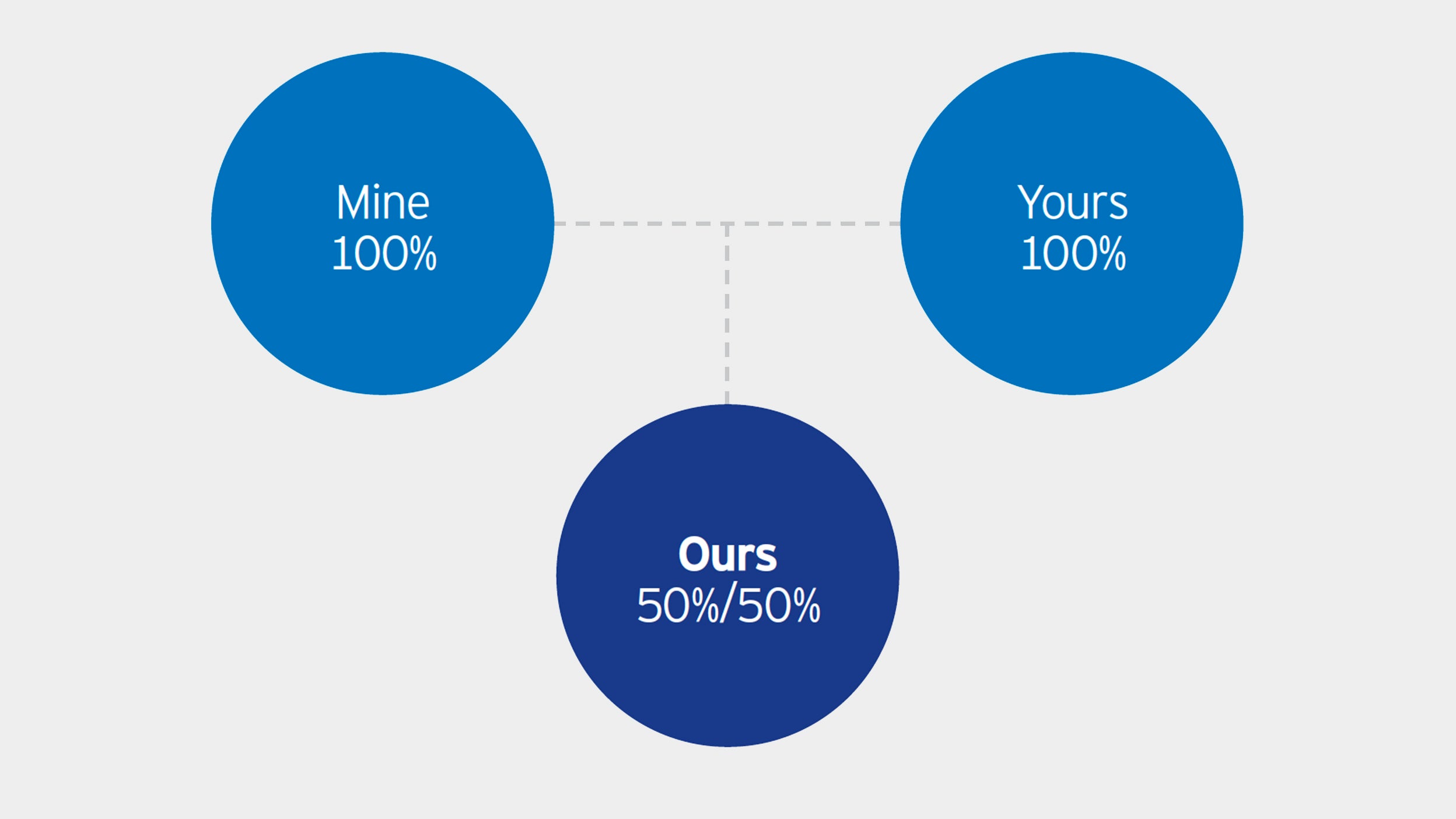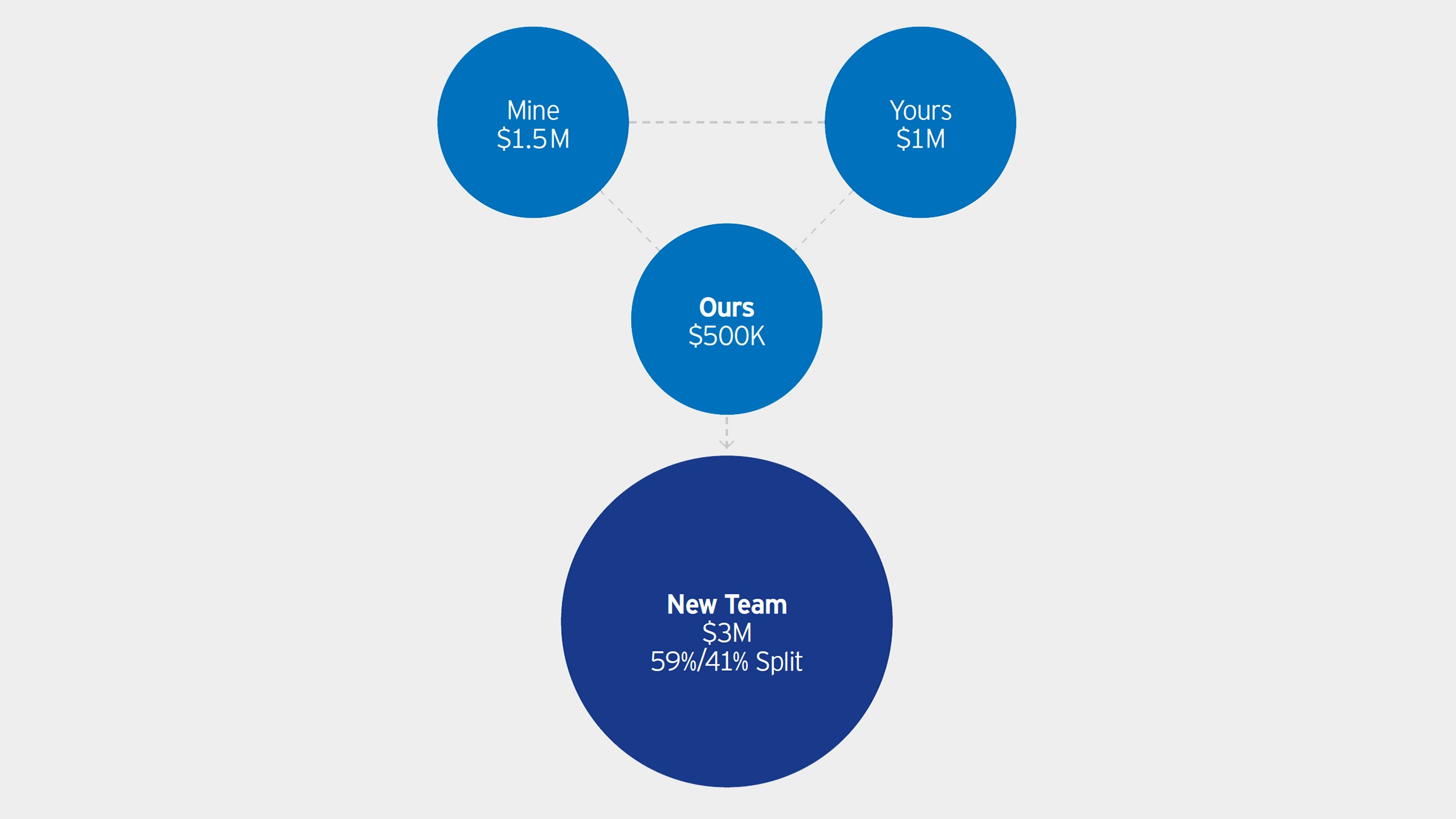
Practice Management Building a foundation for successful teams
Invesco Global Consulting shares key considerations for financial professionals as they work to build successful teams.

We believe there are two great risks to any compensation model:
Our "yours, mine, and ours" dating model is designed to last between 12 and 24 months. This model is built to allow you to "test the water" and to ensure that the synergies you anticipate in forming your team actually materialize. When they do, it is imperative, in our view, that you move to a permanent compensation structure that unifies the team around the entire clientele. You will see this model below.
When you are in the "dating phase" of a new relationship, you often have separate apartments, different circles of friends, separate checking accounts, and separate balance sheets. It is only after marriage, in most cases, that you bring these respective worlds together. We utilize the same sequencing model as you move from the exploratory phase, through the dating phase, and ultimately into a synergistic marriage of your respective practices. This model is built to allow you and your prospective partner(s) to test drive your new team structure without disrupting your respective practices. You open a joint account, seed that joint account with all-new business (and at your discretion, with some existing business), and work with those clients as you anticipate working with all of your respective clients once you become a fully integrated team. If you are the portfolio manager and your prospective partner is the financial planner, you bring that model to bear with your new joint clients. If you are adding a banking, lending, and/or estate planning specialist to your existing team, you might integrate that partner into your joint account clients to see how that works out before bringing the entire business together.

Usually after somewhere between 12 and 24 months of working together only on your joint account business, you might come to the conclusion that there is, in fact, synergy (1+1 = 3) or just redundancy (1+1 = 2). If there is just redundancy, you can simply split up the joint account business and go your separate ways with little difficulty. If you find there is, in fact, the synergy you anticipated (1+1 = 3), the next phase is to bring the entire business together and create splits that basically replicate each partner's gross revenue. Then, work with your firm's marketing department to put together a team brochure and business cards. We can help you frame a message that is designed to clearly articulate your new team and its capabilities. Once this is completed, it's time to "raise the curtain" of your new team and its expanded capability with the goal of handling the complex challenges of your wealthiest clients.


Invesco Global Consulting shares key considerations for financial professionals as they work to build successful teams.

We share key questions for financial professionals to consider as they evaluate prospective business partners.

Managing a practice is all about teamwork. Learn how to create an efficient and effective team with our program, "Constructing and Managing a Synergistic Team".


To learn more about Invesco Global Consulting services and resources, you can contact us here.
Invesco Global Consulting programs are for illustrative, informational and educational purposes. We make no guarantee that participation in any programs or utilization of their content will result in increased business for any financial professional.
This does not constitute a recommendation of any investment strategy or product for a particular investor. Investors should consult a financial professional before making any investment decisions.
The opinions expressed are those of the author and are subject to change without notice. These opinions may differ from those of other Invesco investment professionals.
Note: Not all products, materials or services available at all firms. Financial professionals should contact their home offices.
NA2227367
This link takes you to a site not affiliated with Invesco. The site is for informational purposes only. Invesco does not guarantee nor take any responsibility for any of the content.